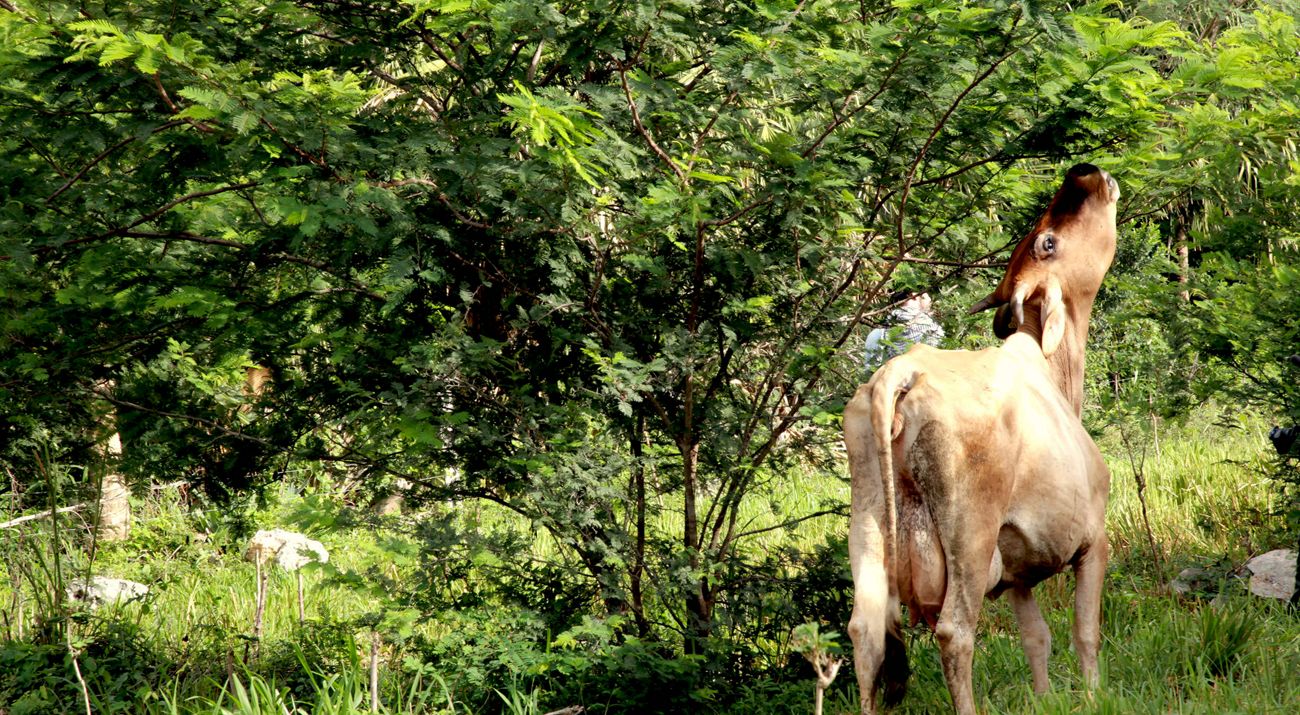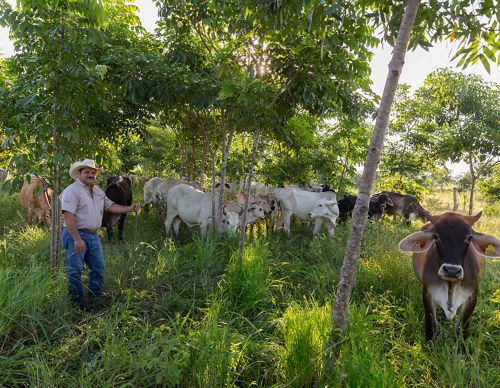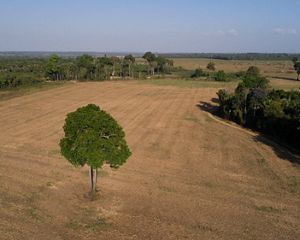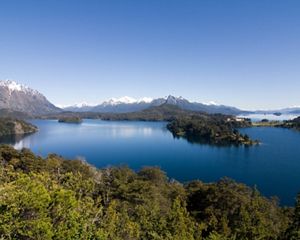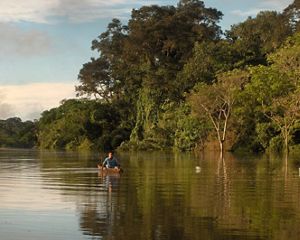The Business Case for Healthy Agricultural Systems
By Ginya Truitt Nakata, Former Director of Lands, Latin America
We all know the fable about the goose that lays golden eggs, one each day, and how the bird’s owner cuts it open in an effort to get all the eggs that must surely be inside. While the story is best known as an idiom of what can happen when voraciousness gets the best of us, its underlying message can also convey the need for balance in addressing the dovetailed challenges of increasing productivity and preserving the very assets that make productivity possible.
Agriculture is unique as an economic sector because, like eggs are to the goose, it is wholly dependent on the health of its host assets—in this case the water and soil, along with biodiversity on both agricultural lands and in surrounding natural areas. To be productive and profitable, producers must continually draw upon these assets which profoundly impact them every time they are used.
For many generations, humans have sought to increase farm productivity through a variety of means. However, the focus over the last century on yield and monocropping, which led to an overreliance on inorganic fertilizers and pesticides, has diminished the health of the soil and water and has negatively affected biodiversity. So has the practice of expanding croplands and ranchlands indiscriminately into environmentally sensitive areas. Only recently have we come to understand just how damaging these techniques have been to the health of the natural capital upon which agriculture depends.
Quote
Studies show it takes as little as three years to make back your investment when you improve existing agricultural land – and make it healthier, more productive and more sustainable.
The sum of all this is that modern agroecosystems, in their quest for intensification, have weak resilience and transitions towards sustainability will need to focus on structures and functions that improve resilience as well as meeting the primary goal of food production. Agricultural intensification heretofore has been associated with sacrifices in ecological balance, and that is what must change as we move toward farming systems that not only are ecologically resilient, but are more productive precisely because they are more resilient.
In recent years, the realization that global agricultural production will have to double by mid-century to meet projected population growth has run smack into some disturbing realities. As a recent article in Bloomberg reported, natural habitats suitable for conversion into usable farmland have nearly maxed out, and any short-term gains in farmland that climate change might bring will be offset by lands that are rendered unsuitable by changing weather.
This is, in fact, why agribusinesses are becoming increasingly interested in the idea of shifting to a healthy agricultural systems approach, such as what we have been promoting and managing at The Nature Conservancy. The approach goes right to the very core of the agriculture business by emphasizing the need to boost productivity and improve profitability at the farm level and up the value chain. And it does this by pursuing environmental goals such as soil regeneration and enrichment, carbon capture, biodiversity, habitat conservation and watershed improvement. Put another way, it seeks to keep agricultural assets at their full productive potential.
One key element of this approach is the goal of increasing production by getting more out of existing farmland, as was done in the second half of the 20th Century, rather than by simply creating more of it, which proved less productive. Agricultural intensification, and not the spread of agricultural land, was the primary driver of the major increase in food production per capita that occurred over that time. In other words, while the global population was growing, food production kept well ahead of that growth—and largely using existing agricultural lands. The problem is that that it all came at the expense of the health of the farmland itself, along with its surrounding habitat, which were generally downgraded to support the increases in production.
This is why we need to scale up the shift to healthy agricultural systems—to reverse this downgrading of assets, to restore the health of agricultural areas and with that their capacity to increase production.
Recent studies show that it takes as little as three years to make back your investment when you improve existing agricultural land—and make it healthier, more productive and more sustainable—while the returns from converting lands from natural habitat typically take longer than five years. And that calculation doesn’t include the additional long-term costs associated with converting natural areas to non-regenerative systems, such as the costs of soil quality depletion and diminution of water sources.
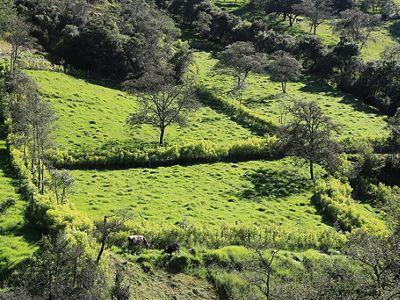
In light of this, some investors and businesspeople are beginning to see this bottom line more clearly as they recognize what is wrong with the way agriculture is being practiced and how we can improve it to make it more profitable. For his part, Paul Polman, CEO of Unilever, recently noted in a Wall Street Journal opinion piece that many agribusinesses are looking to future-proof their supply chains because they recognize that “the way we produce our food and use our land drives massive environmental destruction … and [is] causing devastating natural-capital losses.” He also points out that, on the positive side of the ledger, the economic value that would be created by transforming our food system would be more than $2 trillion by 2030.
As a global agricultural producer, Latin America is best-positioned to pave this way forward for the rest of this century, given its natural capital and its yet unfulfilled potential for increasing productivity over the next decade, which the Global Harvest Initiative has calculated it is among the highest of any region in the world and is on track to meet 127 percent of regional food demand through productivity growth by 2030. Over the last 60 years, the continent’s farmers and ranchers have boosted their proportional contribution to global agriculture’s net calorie count by more than 50 percent. As just one example of how this happened, Latin America is now the world’s largest global exporter of soybeans and soybean products, where as a half-century ago the continent produced barely any soybeans at all.
But there is still work to be done and a great deal of change has to happen if Latin America is to bridge the productivity gap for global food security in the near term while other regions—particularly Africa and Asia—make the investments needed to secure their own futures as food producers. Across the continent farmers and agribusinesses must vastly scale up the shift to a healthy agriculture systems approach.
Looking to the longer term, a study that is cited in the recent bestselling book “Drawdown” calculates the 30-year financial returns for farming operations that invest in various healthy agriculture techniques. It predicts the global ROI over that period will be 15 times the amount invested in creating silvopastoral farming systems (those that combine forestry with grazing and cropping to preserve the health and productive capacity of the land), 18 times for instituting farmland restoration, 33 times for deploying regenerative agriculture techniques, and 56 times for investments in conservation agriculture practices.
Scaling up these practices and techniques across global agriculture could narrow the gap between increased productivity and optimizing the natural ecosystem, as more are realizing that in the context of agriculture they are one in the same. Increasingly, critical assets are being recognized as not just “land and water,” but rather healthy, regenerating farmland, the productive capacity of which is supported by surrounding natural habitats and watersheds. And the vitality of those assets, to be sure, is going to make all the difference in the world when it comes to the profitability and success of farming and other agricultural businesses in the decades to come.
The bottom line is, there really are no losers in the equation that leads to healthy agricultural systems. Farming becomes more productive and profitable and able to keep pace with increasing global demand for food. Land is restored and becomes healthier, more fertile and more valuable. Natural areas and biodiversity are preserved and enhanced, while agriculture over time ceases to contribute to climate change—even serving as a carbon sink—and therefore helps alleviate an existential threat to farming itself.
And it all starts with the lesson found in Aesop’s fable about the goose—that if we treat our critical productive assets well, they will serve us just as well for many years to come.
Originally posted on Chicago Council on Global Affairs on February 8, 2018.
